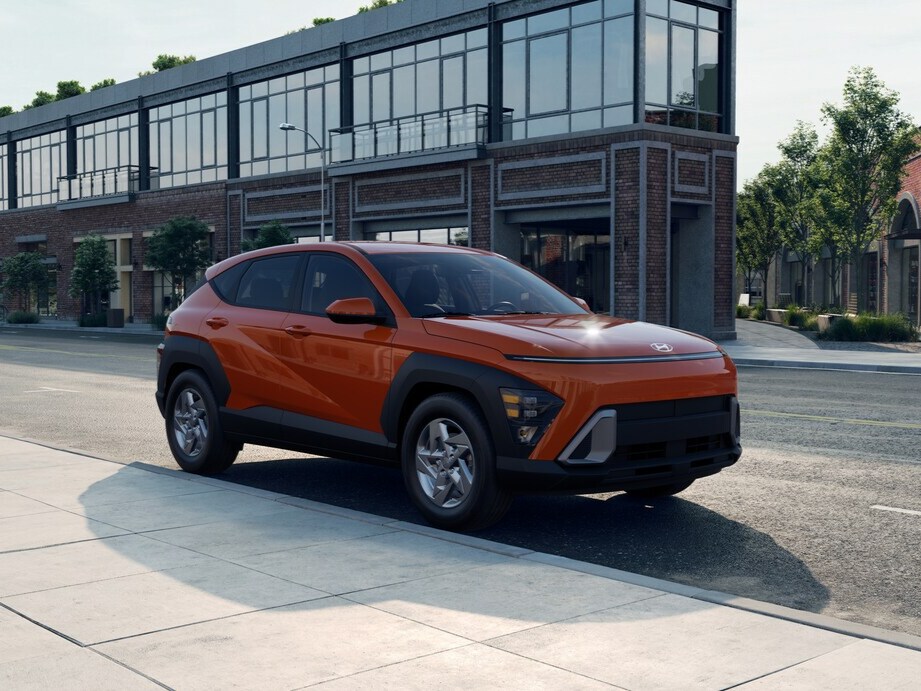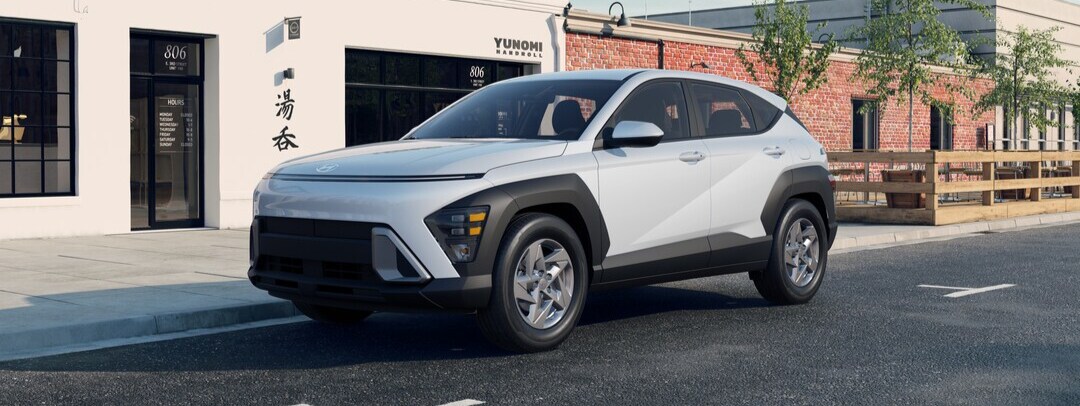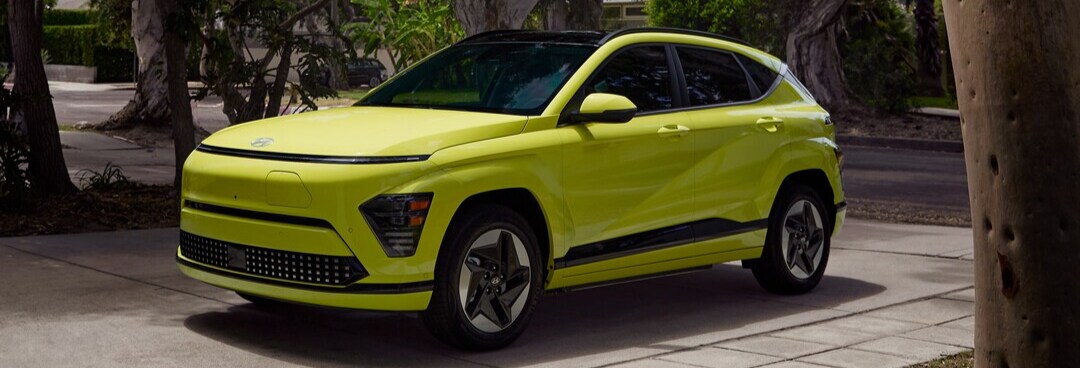
2025 Hyundai Kona vs Kona Electric Comparison

Hyundai Kona Electric
The 2025 Hyundai Kona vs. Kona Electric: Gas vs. Electron, Which Urban Hero Delivers?
Hyundai's spunky Kona has long been the subcompact crossover for drivers who refuse to compromise-equal parts style, practicality, and verve. For 2025, the lineup splits into two distinct identities: the combustion-powered Kona, now sharper and tech-savvy, and its all-electric twin, the Kona Electric, which trades exhaust notes for electrons. Both share Hyundai's latest design language and a tech-loaded cabin, but their powertrains cater to divergent priorities. Is the Electric's eco-friendly edge worth the premium, or does the gas model's road-trip readiness keep it king? Let's rev (or charge) into the details.
| Features | 2025 Hyundai Kona | 2025 Hyundai Kona Electric |
|---|---|---|
| Drivetrain | Front wheel drive | Front wheel drive |
| Engine power | 147 hp @ 6,200 rpm | 201 hp |
| Engine torque | 132 lb-ft @ 4,500 rpm | 188 lb-ft |
| Engine displacement | 2.0 l | Not available |
| Engine configuration | Inline 4 | Electric |
| Transmission | Continuously variable-speed automatic | 1-speed direct drive |
| Seating Capacity | 5 | 5 |
| Cargo Space | 25.5 cu. ft. | 25.5 cu. ft. |
Performance
2025 Hyundai Kona (Gas):
Engine Choices:
- 2.0L inline-four: 147 horsepower, 132 pound-feet torque (standard on SE/SEL).
- 1.6L Turbocharged inline-four: 195 horsepower, 195 pound-feet (N Line trim only).
- Transmission: CVT (2.0L) or 7-speed dual-clutch automatic (1.6T).
- Drivetrain: Standard FWD; AWD optional on SEL and Limited trims.
- 0-60 mph: 8.4 seconds (2.0L) / 7.1 seconds (1.6T).
- Fuel Economy: Up to 32 MPG combined (2.0L FWD).
2025 Hyundai Kona Electric:
- Powertrain: Single front-mounted electric motor (FWD).
- Output: 201 horsepower, 188 pound-feet torque (215 horsepower in 10-second boost mode).
- Battery: 64.8 kWh (usable).
- Range: 260 miles (EPA-estimated).
- Charging: 10-80 percent in 43 minutes (100 kW DC fast charging).
- 0-60 mph: 6.8 seconds.
The Takeaway: The Electric's instant torque and silent surge make city driving a breeze, but the turbocharged N Line gas model offers sharper throttle response and AWD grit for weekend adventures in Houston, TX.




Design: Siblings, Not Twins
Exterior:
- Gas Kona: Aggressive cascading grille, angular LED daytime runners, and rugged lower cladding. Optional two-tone roof and 19-inch wheels.
- Kona Electric: Smoothed-over grille with pixel-inspired texture, aerodynamic alloy wheels, and exclusive "Cyber Silver" paint. Charge port hidden in the front fender.
- Shared DNA: Identical dimensions (172.6 inches long), full-width LED taillights, and available panoramic sunroof.
Interior:
- Gas Model: Sporty, driver-focused cockpit with optional dual 12.3-inch screens. Heated/ventilated front seats and a 60/40 split-folding rear seat.
- Electric: Standard dual 12.3-inch screens, eco-friendly materials (recycled PET seats, bio paint), and flat floor for added rear footroom.
- Both: Hyundai's latest infotainment with wireless Apple CarPlay/Android Auto, ambient lighting, and a hands-free power liftgate.
Top Features: Tech Showdown
Shared Features
- Hyundai SmartSense: Highway Driving Assist 2, Blind-Spot View Monitor, Remote Smart Parking.
- Bose Premium Audio: 8-speaker system with rear subwoofer.
- Digital Key: Unlock and start via smartphone.
Gas-Exclusive Perks:
- N Line Trim: Sport-tuned suspension, blacked-out exterior accents, paddle shifters, and bolstered sport seats.
- AWD Capability: For snowy commutes or gravel-road detours.
Electric-Exclusive Perks:
- V2L (Vehicle-to-Load): Power devices (up to 1.9 kW) via rear outlet.
- i-Pedal Driving: One-pedal regen braking for stop-and-go traffic.
- Battery Preconditioning: Optimizes charging speed in cold weather.




Dimensions & Practicality
- Wheelbase: Identical 104.7 inches for both.
- Cargo Space: 25.5 cubic-feet (gas) vs. 24.8 cubic-feet (Electric) behind the rear seats.
- Ground Clearance: 7.2 inches (gas) vs. 6.7 inches (Electric).
- Weight: The electric model weighs around 700 pounds more due to its battery.
The gas Kona's slight cargo and clearance advantages cater to active lifestyles, while the Electric's lower center of gravity enhances cornering stability.
FAQ Section
Can the Kona Electric handle a weekend road trip?
Yes, but plan for charging stops-260 miles is ample for day trips, not cross-country sprints. The gas Kona's 420-mile range (with AWD) is better suited for marathons.
Does the Electric qualify for tax incentives?
Absolutely. It's eligible for the $7,500 federal EV tax credit, which slashes its effective price closer to the gas model.
Which is cheaper long-term?
The Electric: No oil changes, fewer brake replacements (thanks to regen braking), and lower "fuel" costs-about $0.03 per mile vs. $0.12 for gas.
Can I tow with the Kona Electric?
No. The gas model can tow up to 1,500 lbs with AWD; the Electric isn't rated for towing.
Visit Texan Hyundai
Ready to pick your Kona alongside wonderful specials ? At Texan Hyundai, we'll help you navigate the electric revolution-or stick with combustion confidence:
- Lease the Gas Kona: From $269/month with $2,999 down (SE trim).
- Lease the Kona Electric: From $329/month with $3,999 down (after $7,500 EV credit).
- Financing Application : Get pre-approved online in 60 seconds.
- Trade-In: Get a competitive offer on your current ride-we beat CarMax guarantees.
- Test Drive Both: Feel the electric torque and turbocharged power back-to-back.
Stop By Today
Learn about us and experience a premium dealership.

